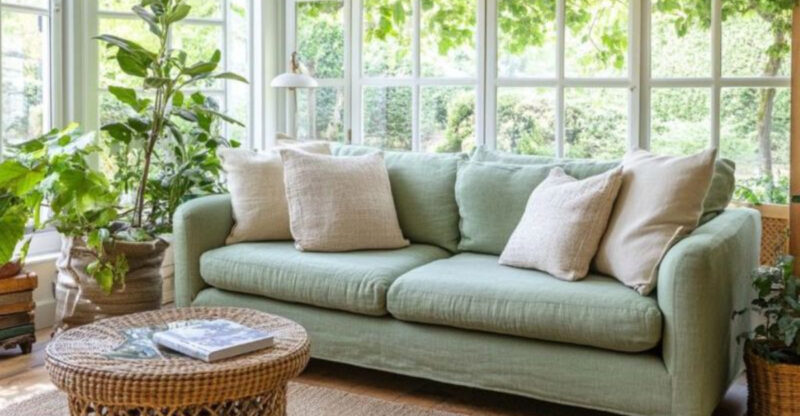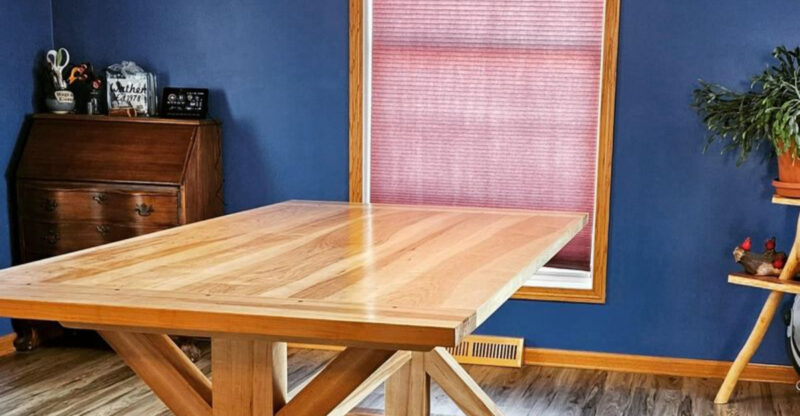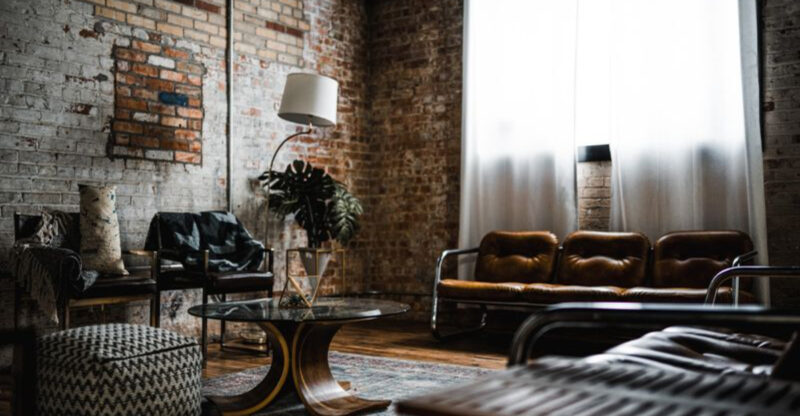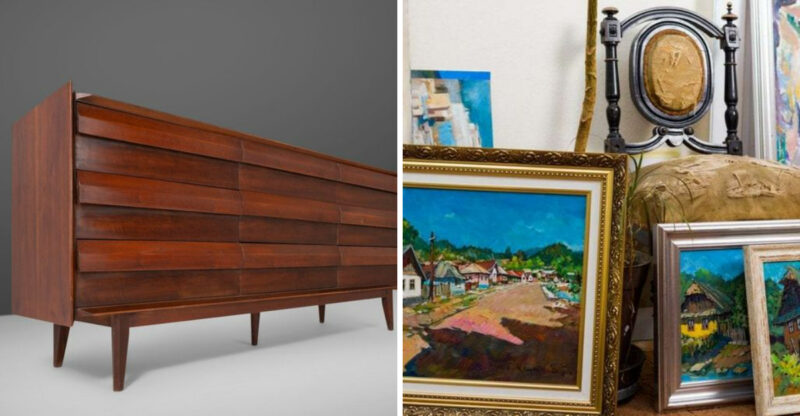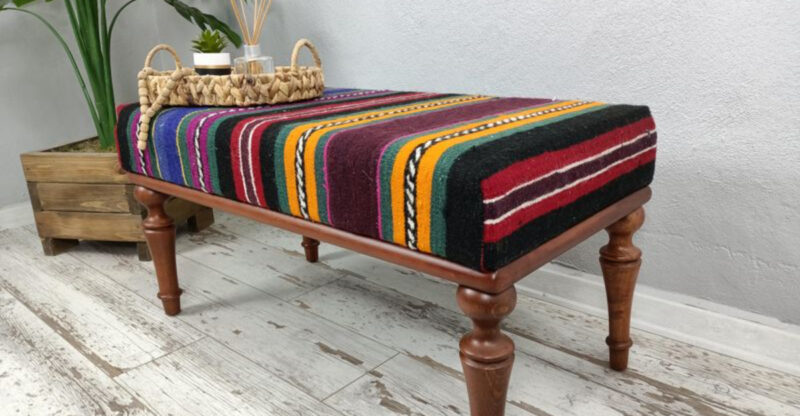17 Furniture Arrangements That Make Any Room Look Larger
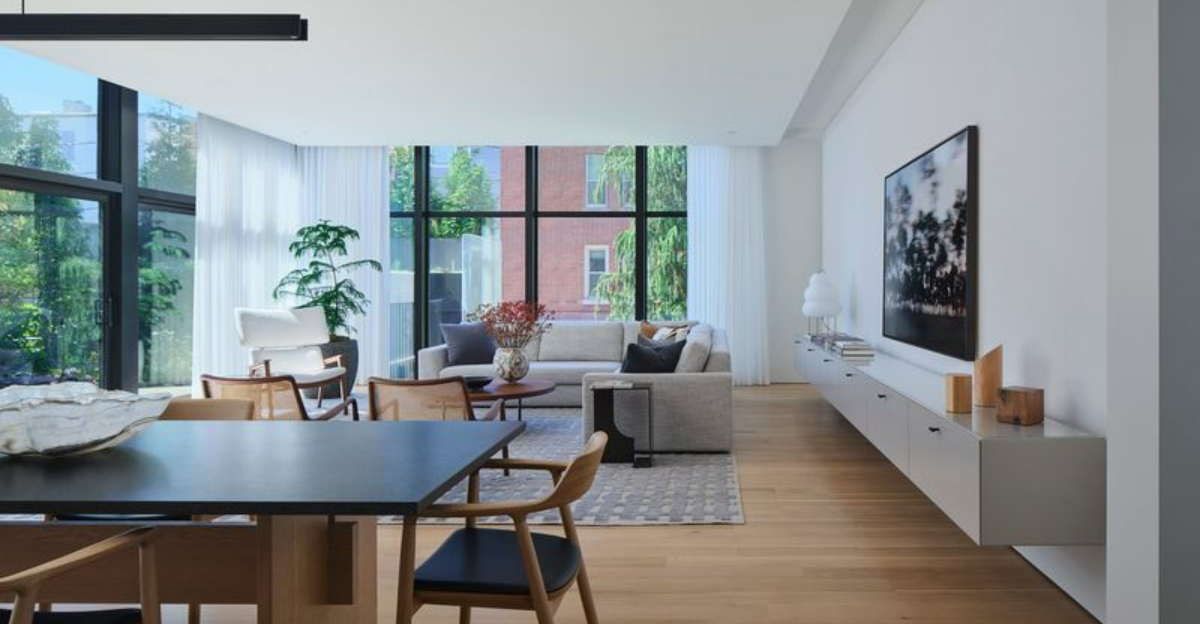
Feeling cramped in your living space? You don’t need to knock down walls or move to a bigger place to create the illusion of more room. With some clever furniture arrangements, you can transform even the tiniest spaces into areas that feel open and inviting.
Here are some smart ways to position your furniture that will make any room in your home look and feel more spacious.
1. Float Furniture Away From Walls
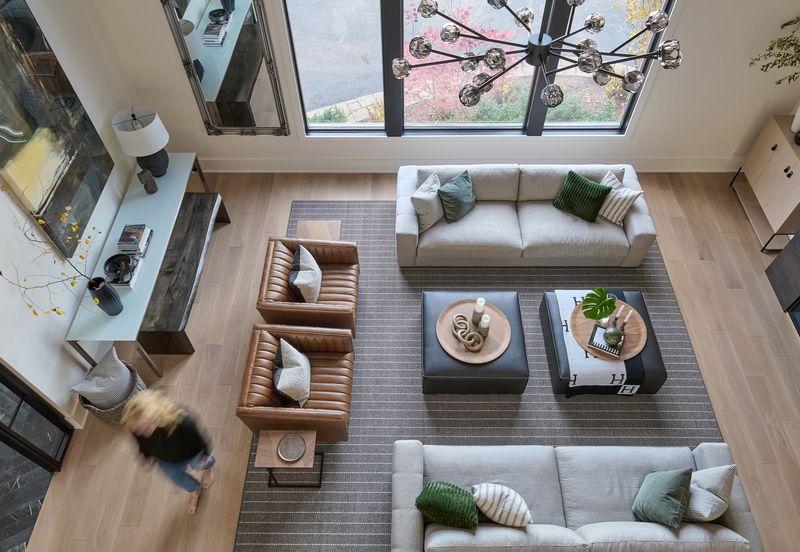
Contrary to popular belief, pushing all furniture against walls doesn’t maximize space. By floating pieces a few inches away, you create breathing room that makes the area feel less crowded.
This arrangement works especially well in living rooms where a sofa pulled slightly forward creates an invisible pathway behind it. The space feels more deliberate and planned rather than stuffed to capacity.
2. Create Conversation Areas
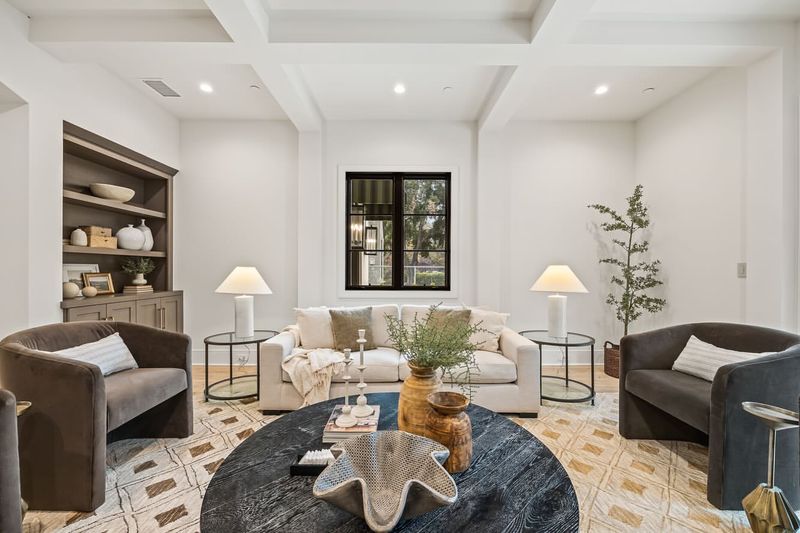
Grouping your seating in a face-to-face arrangement encourages conversation while opening up the rest of the room. I’ve found this works wonders in boxy spaces that might otherwise feel confined.
Place chairs and sofas no more than 8 feet apart to maintain intimacy without crowding. The defined conversation zone tricks the eye into seeing distinct areas within one room, making the overall space feel larger.
3. Use Multi-Functional Furniture
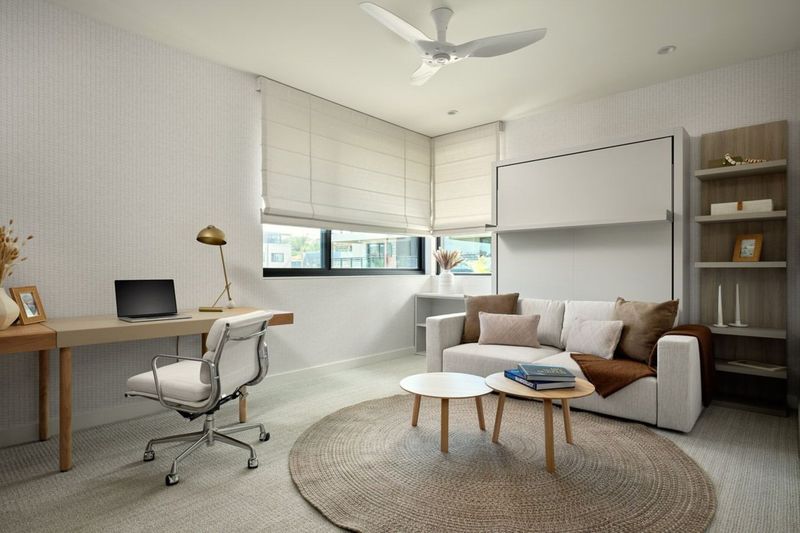
Storage ottomans, fold-down desks, and extendable tables are game-changers for small spaces. When furniture serves double-duty, you need fewer pieces overall, instantly creating more visual space.
My favorite trick is using nesting tables that can be spread out when needed and tucked away when not in use. With multi-purpose pieces, rooms maintain functionality without the clutter that makes spaces feel cramped.
4. Choose Low-Profile Furniture
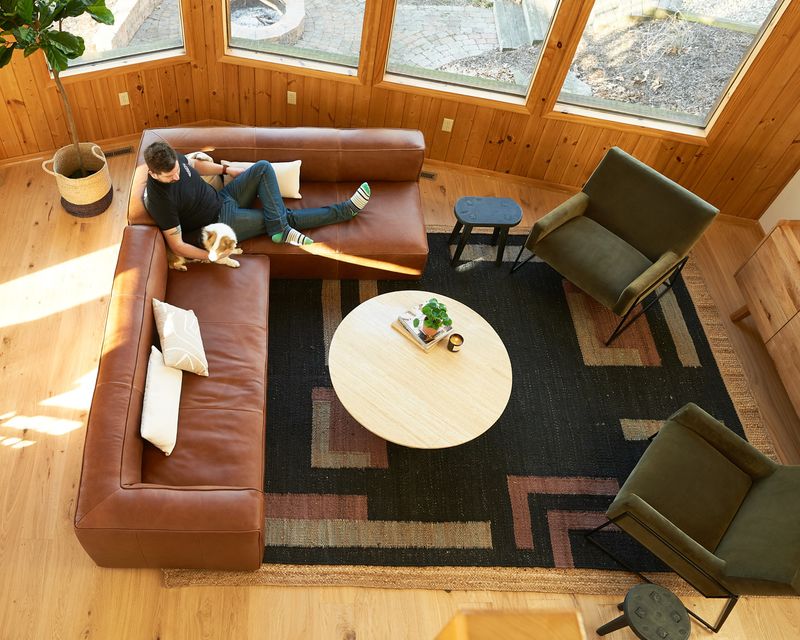
Bulky, tall furniture pieces create visual heaviness that weighs down a room. Switching to lower-profile options with visible legs allows your eye to travel underneath, creating an airy feeling.
Mid-century modern pieces work wonderfully for this purpose. The streamlined designs and raised legs make rooms feel more spacious by allowing light to flow through the room rather than being blocked by solid furniture bases.
5. Diagonal Placement
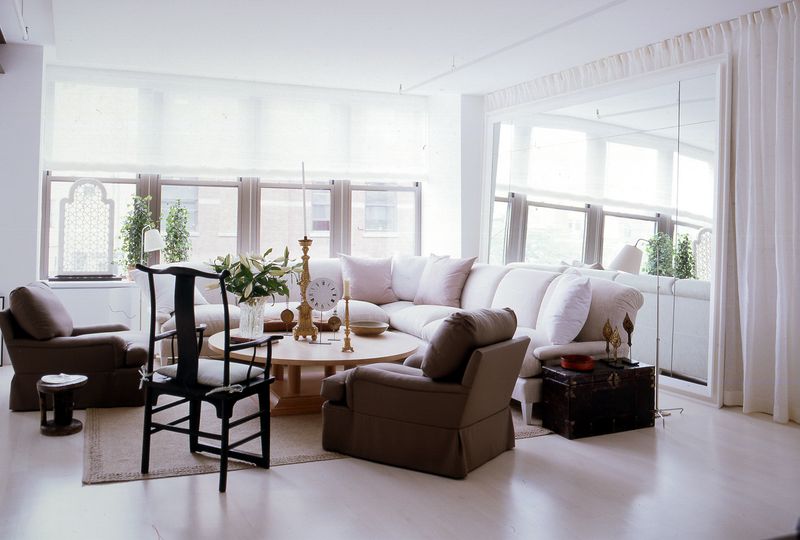
Placing furniture at an angle creates dynamic pathways through the room instead of straight, boring lines. The diagonal arrangement draws the eye to the longest dimension of the room.
Try positioning your bed or desk diagonally in a corner. This unexpected arrangement makes square rooms feel less boxy and creates interesting triangular spaces that can serve as cozy nooks without adding more furniture.
6. Create Clear Pathways
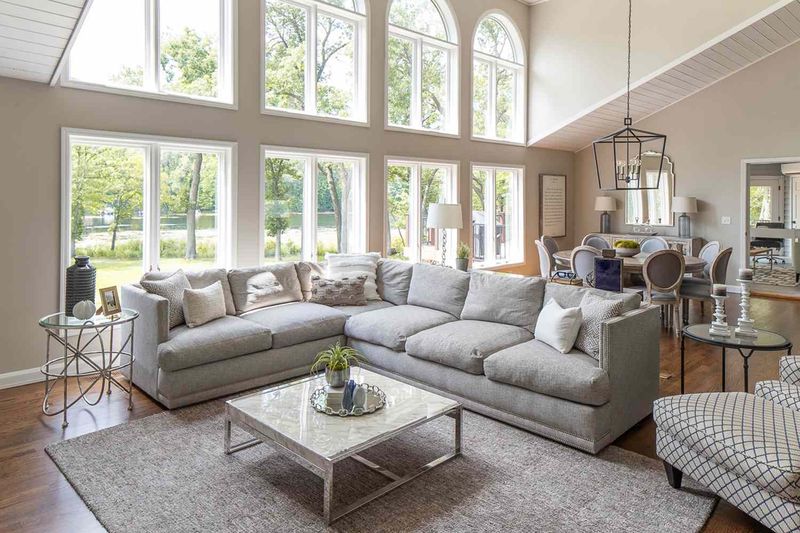
Rooms feel larger when you can move through them easily. I always ensure there’s at least 30 inches of walking space between furniture pieces to create clear pathways.
Map out how people naturally move through the space and arrange furniture accordingly. When visitors don’t have to zigzag around obstacles, the room feels more organized and spacious. This arrangement works particularly well in high-traffic areas like living rooms.
7. Scale Furniture to Room Size
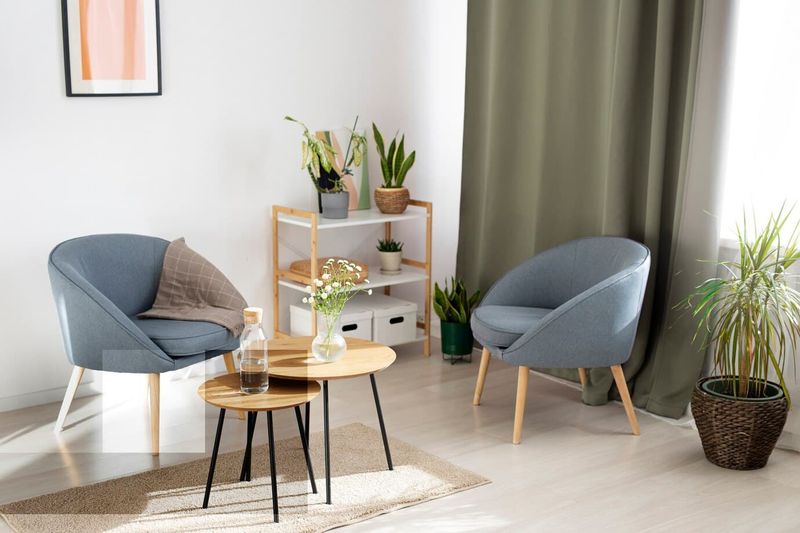
Oversized furniture in small rooms creates an instant cramped feeling. Choosing appropriately scaled pieces makes a tremendous difference in how spacious a room feels.
For apartments and smaller homes, look for apartment-sized sofas and loveseats rather than full-sized sectionals. The proportional relationship between furniture and room dimensions creates visual harmony that makes spaces feel larger and more balanced.
8. Use Glass and Transparent Materials
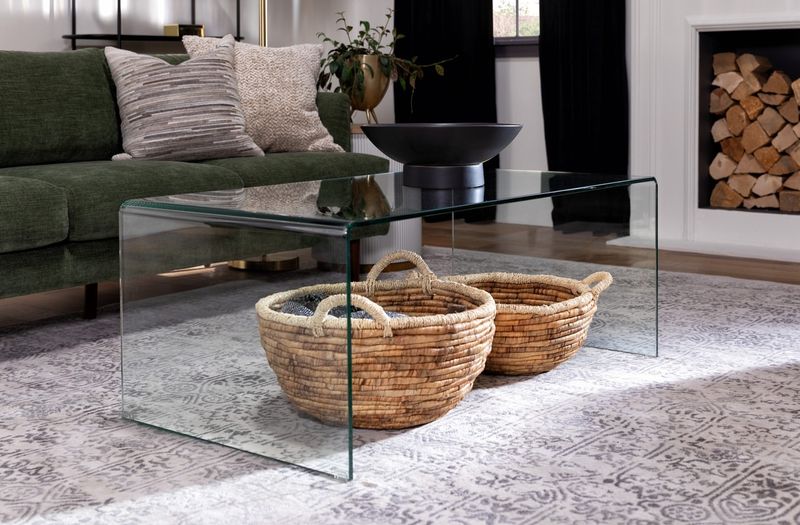
Solid wooden coffee tables and desks can visually chop up a room. Replacing them with glass or acrylic alternatives instantly opens up the space since your eye travels right through them.
My clients are always amazed at how much larger their living rooms feel after switching to a glass coffee table. The transparency trick works wonderfully for dining tables and desks too, especially in multipurpose rooms where visual lightness matters most.
9. Create a Focal Wall
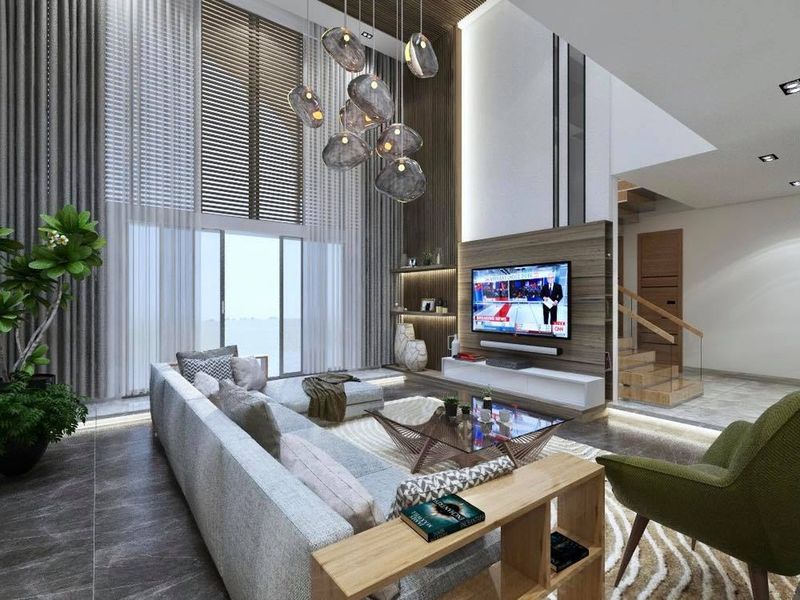
Arranging furniture to highlight one main wall draws attention away from the room’s size. Position your largest piece (like a sofa) facing this wall and build the arrangement from there.
This works especially well with fireplaces or media centers. The focused arrangement creates a sense of purpose that makes the room feel intentionally designed rather than cramped. Your eye is drawn to the focal point instead of noticing spatial limitations.
10. Embrace Negative Space
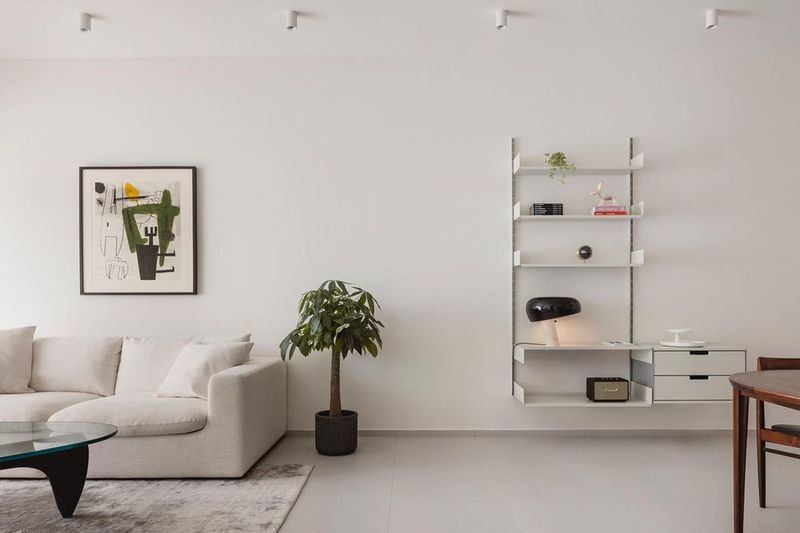
Many homeowners make the mistake of filling every corner. Leaving some areas intentionally empty creates breathing room that makes spaces feel larger and more relaxed.
Think of negative space as a design element rather than wasted space. Empty corners and walls allow the eye to rest and appreciate the furniture you do have. This minimalist approach works particularly well in bedrooms where calm is essential.
11. Unify With Area Rugs
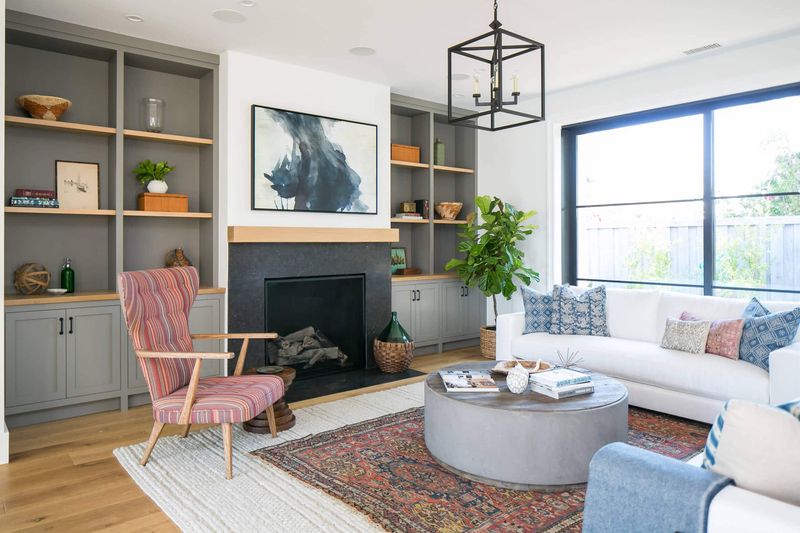
Area rugs can define zones without walls or bulky dividers. A properly sized rug anchors furniture into a cohesive group while maintaining open space around it.
For living rooms, choose a rug large enough that at least the front legs of all seating pieces rest on it. This creates a unified conversation area that feels distinct yet connected to the larger room. The defined zone makes the overall space feel more organized.
12. Position Furniture for Views
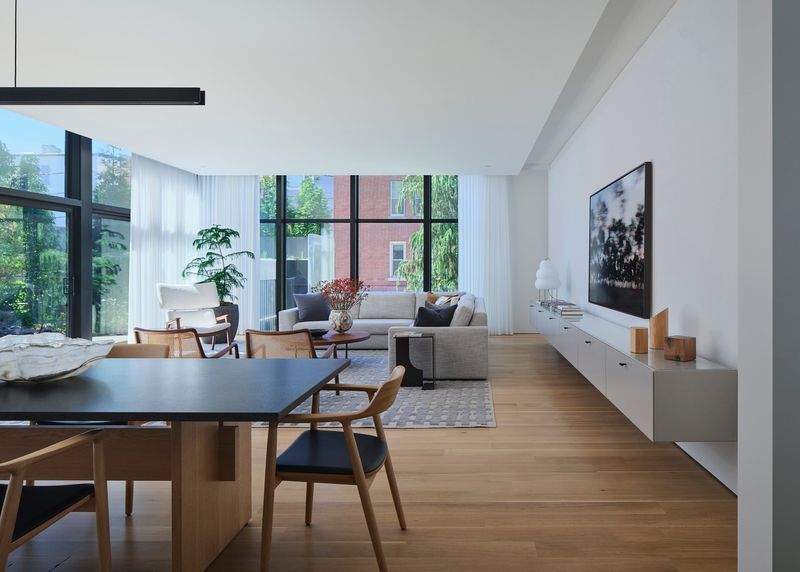
Arranging seating to face windows or interesting architectural features draws the eye outward, making interiors feel connected to the outdoors. This visual extension makes rooms feel boundless rather than confined.
Even in city apartments, positioning a chair to face a window creates a psychological expansion of space. The arrangement works especially well in bedrooms and living rooms where contemplative moments occur.
13. Use Vertical Space Wisely
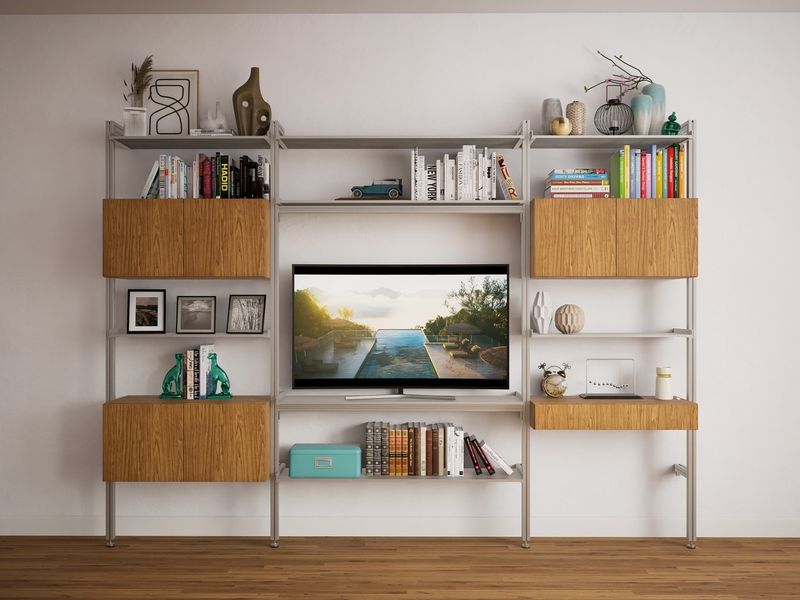
Drawing the eye upward creates the illusion of height and spaciousness. Tall, narrow bookcases and vertical shelving units accomplish this without eating up valuable floor space.
Wall-mounted shelving above furniture pieces maximizes storage while keeping the floor clear. The vertical lines naturally make ceilings appear higher. Just be careful not to overcrowd these vertical elements—keep them somewhat sparse for the best effect.
14. Create Room Dividers Without Walls
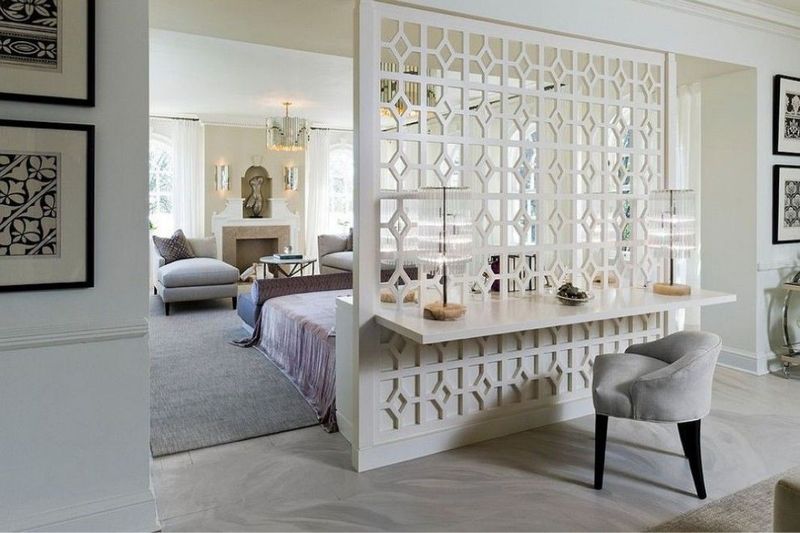
In studio apartments or open floor plans, furniture can define separate areas without closing them off. Positioning a sofa or bookcase as a room divider creates distinct zones while maintaining openness.
Open-backed shelving works wonderfully as a see-through divider. The partially visible space beyond creates depth perception that makes both areas feel more spacious than if they were completely separated by solid walls.
15. Symmetrical Arrangements
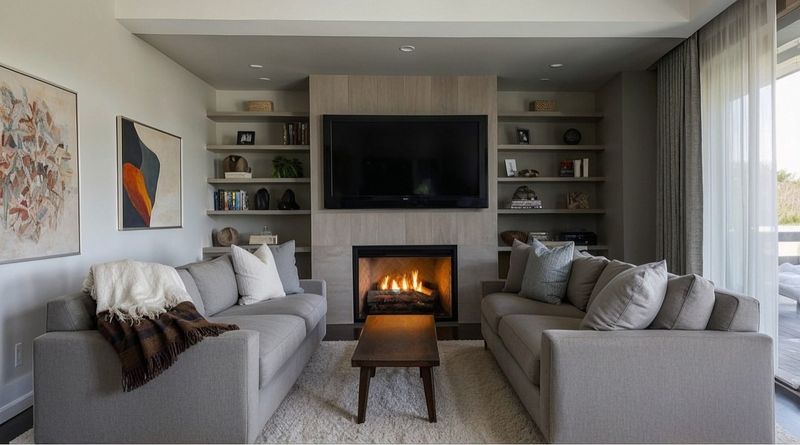
Balanced, symmetrical layouts create a sense of order that makes rooms feel more spacious. Matching chairs flanking a fireplace or identical nightstands on either side of a bed create visual harmony.
The predictable pattern allows your brain to quickly understand the space without visual confusion. When your mind doesn’t have to work to make sense of a chaotic arrangement, the room feels more organized and consequently larger.
16. Create Zones Within Larger Rooms
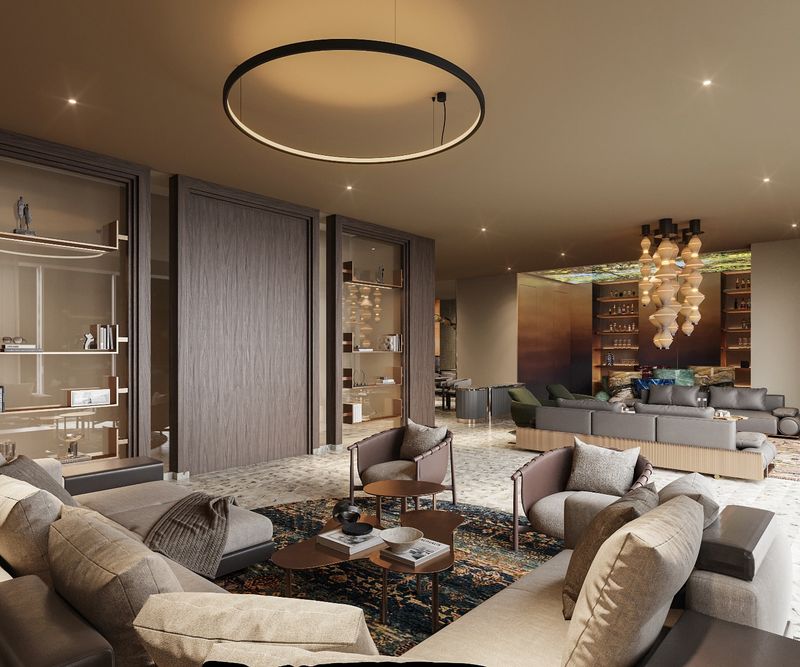
Breaking up large rooms into distinct functional areas actually makes the overall space feel larger. A reading nook in one corner and a TV area in another gives purpose to otherwise empty space.
The key is maintaining visual connection between zones while giving each area its own identity. Back-to-back sofas or area rugs can define different zones without walls. This multi-functional approach makes rooms feel more versatile and spacious.
17. Incorporate Built-In Storage
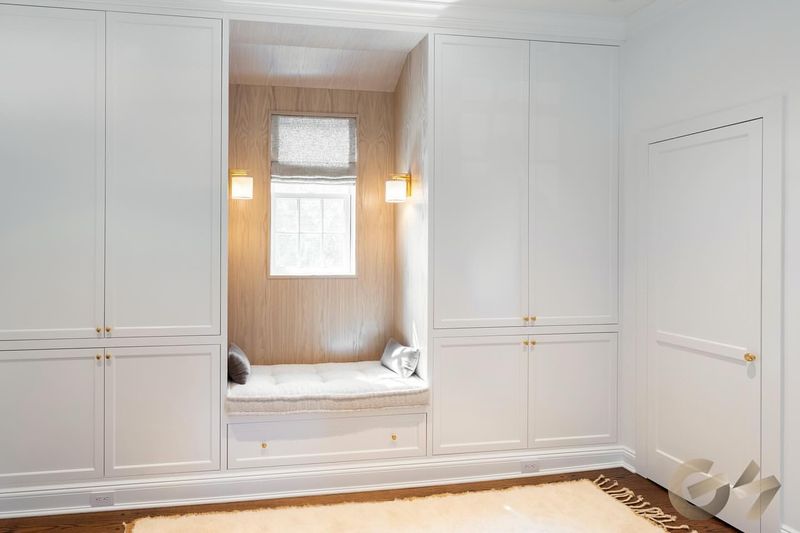
Built-in shelving and storage eliminates the need for bulky standalone furniture pieces. Custom solutions that utilize wall space rather than floor space instantly make rooms feel larger.
Window seats with storage drawers underneath or built-in bookshelves flanking a fireplace maximize functionality without consuming precious floor area. The streamlined look of built-ins creates clean lines that contribute to a more spacious feeling.

